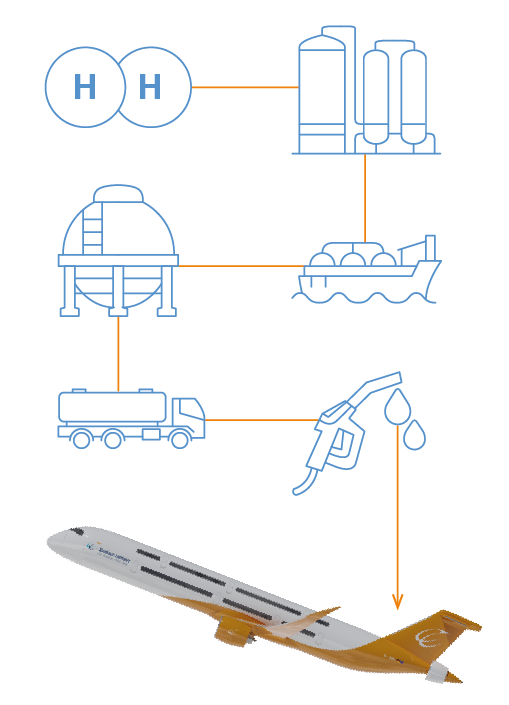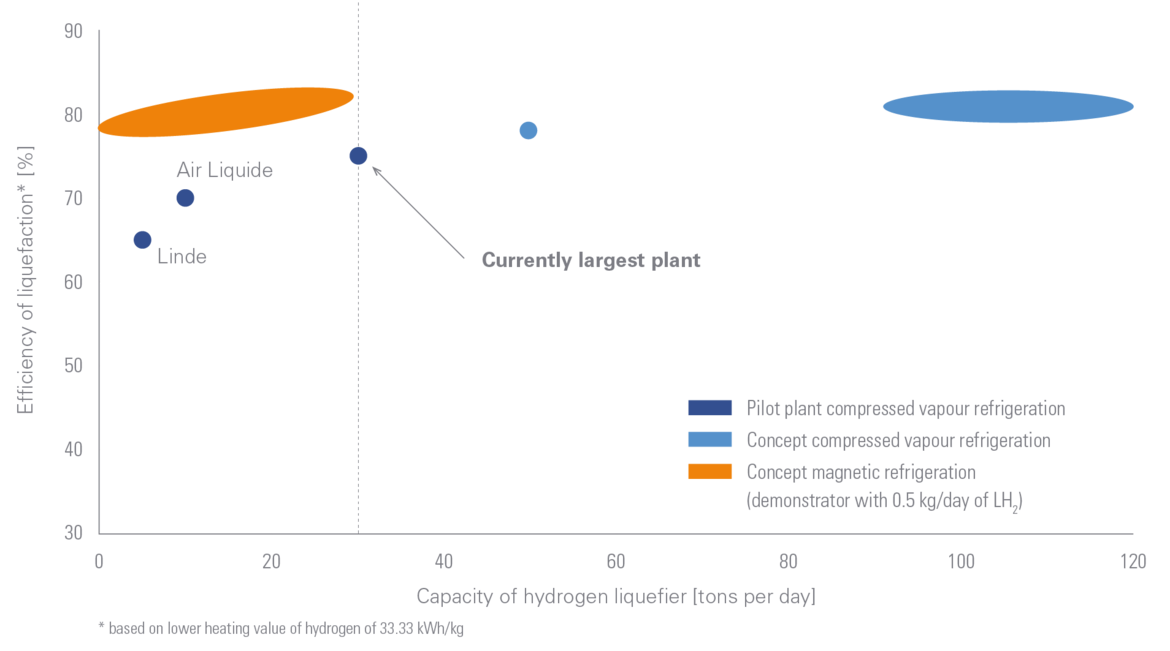The beneficial use of green hydrogen (H2) in its liquid form (LH2) as an energy carrier in aviation requires radical technological progress along the entire chain from production and liquefaction to supply and storage in cryotanks. Early detection of technology levers, for example in terms of performance, energy demand, and scalability, is an essential prerequisite for a well-founded potential assessment.

Bauhaus Luftfahrt has identified emerging technology options along the (L)H2 life cycle, evaluated them comparatively, and derived perspectives for increasing the overall efficiency. Direct energy demand is dominated by production, followed by liquefaction, for which perspectives for significant efficiency gains emerge.
The future use of mixed refrigerants and the increase in plant capacity are important levers for compressed-gas refrigeration methods that are already in deployment on an industrial scale. On a laboratory scale, a complementary technology to hydrogen liquefaction is proving promising. It is based on the principle of magnetic cooling and uses a strong magnetic field and solid instead of gaseous refrigerants. Similar efficiency as for conventional approaches could be realised at significantly lower plant capacity and land use, since large compressors are not required. This opens up application perspectives for space-restricted airports for the efficient liquefaction of smaller quantities or reliquefaction of boil-off gas.
In addition, the comparison of different hydrogen storage concepts shows considerable weight advantages for graphite fibre-based composite cryotanks that allegedly tested leaktight. These findings are integrated into holistic considerations of the future role of hydrogen in the transformation towards sustainable aviation.


